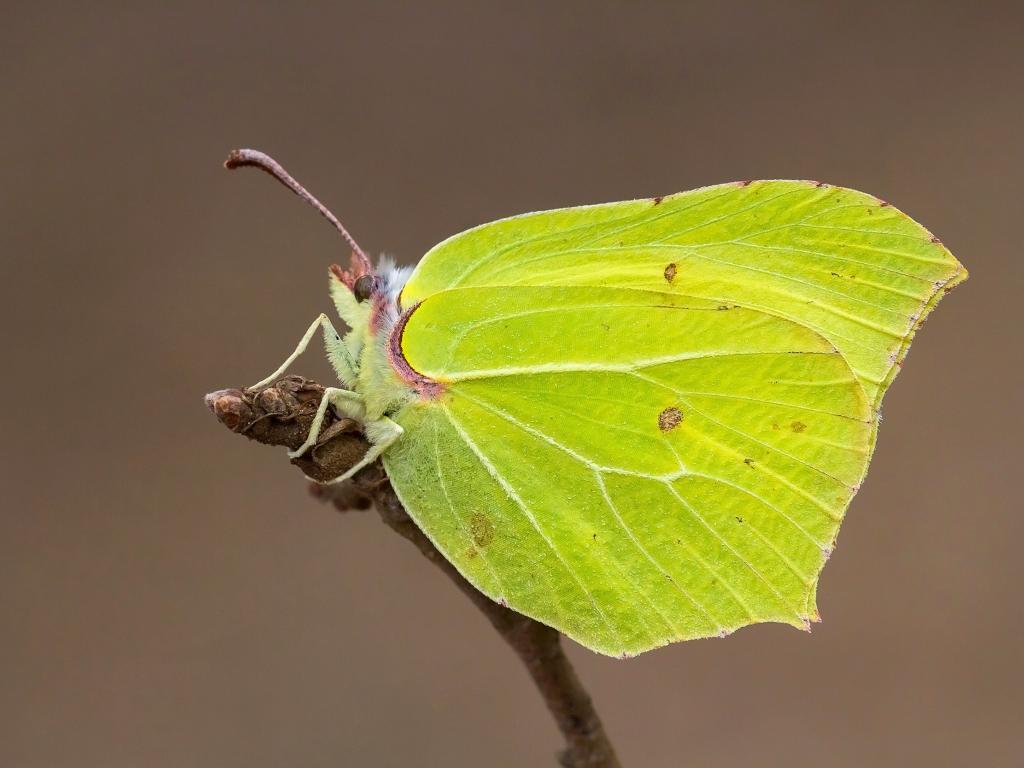By Mike Lavelle
This all happened because of a conversation I had with Arthur McCulloch a few years ago. He was a butterfly expert who lived in Costell’s Edge. He told me that the only plant on which the Brimstone butterfly lays its eggs is a plant called Alder Buckthorn. This is a shrubby plant that favours damp areas. I didn’t do anything about this until about 3 years ago when I decided to plant some. It is not easy to get hold of, but I managed to purchase 10 “whips” over the internet. These are young plants that consist of a single stem which might be about 30-40cm in length, with bare roots on the end. I planted these at the edge of a field, and spent a long time erecting a fence to keep the sheep from devouring them.
The following year, they were still alive, but had shown no signs of growing in any significant way. This went on for another couple of years, when I decided to move them to a damp area in the same field. I fenced them off again, but this time I did not make the fence strong enough, and the sheep broke down the fence and trampled the Alder Buckthorn. That was last autumn. In the winter, I reinforced the fence, and got all the plants upright.

This spring, I was pleased to see that all the plants were thriving, and were starting to show signs of growing bigger. In early May this year I was amazed to find a single egg attached to the underside of 3 or 4 leaves. I sent a photo of one to a friend who is a butterfly expert, and he confirmed that these were indeed the eggs of the Brimstone butterfly.
Today (8th June), I was in the field next to the one with the Alder Buckthorn, when I saw a pair of Brimstone butterflies circling each other. This made me look up the life cycle of the butterfly on my phone, and it mentioned that the caterpillar lies on the spine of the leaf to make itself less conspicuous. I went down to the Alder Buckthorn, and, lo and behold, there was a caterpillar on one leaf, and not on the plant where I had seen the eggs.

This is just a start, but I am hoping that in the long run this might make a tiny difference to the overall population. The Brimstone is fairly common. The male is a bright greeny-yellow colour, and the female is much paler, almost white. They hibernate in the winter and so are one of the earlier butterflies to see in the spring in the UK.


Very interesting Mike, shows what lots of patience will achieve. A nice success story!
Well done Mike, that’s great news for the Brimstone. When I worked in the playgroup we used to take the children into the woods near the village hall. We regularly saw Brimstones as early as February.